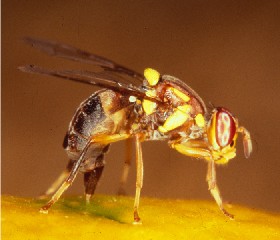|
“Governments are turning a blind eye to Australia’s horticultural export crisis”, says David Minnis.
 Horticulture remains the second largest agricultural industry in Australia, and one in seven rural jobs in Australia is associated with the sector. Horticulture remains the second largest agricultural industry in Australia, and one in seven rural jobs in Australia is associated with the sector.
Given these facts, you might have thought politicians would be a little more interested in horticulture and how well it is travelling.
As an exporter of fresh fruit and vegetables, I can assure you growers and traders are doing it very tough.
You only have to travel to the Riverland and Sunraysia and see the neglected vines, or the citrus and stonefruit trees removed because the price of water is beyond what growers can afford.
“There are simply not enough markets to sell to”
In 2005 mainland stonefruit growers lost access to Taiwan, when that country included Queensland fruit fly on its prohibited pest list. Three years later we are still trying to regain entry.
 Taiwan was the largest market for Australian stonefruit at the time that we lost access, so it is not surprising that in 2008 exports have halved. Taiwan was the largest market for Australian stonefruit at the time that we lost access, so it is not surprising that in 2008 exports have halved.
Exporters believe the loss of the Taiwan has cost the Australia $60 million in lost export earnings so far.
Fruit fly has never been found in Australian fruit exported to Taiwan, yet a change in the regulations has resulted in a continuing ban.
This loss of export markets means many Australian farms are no longer viable.
I currently cannot export cherries, peaches, plums, nectarines and apricots to Japan, Korea, China, Taiwan, the US, the Philippines or New Zealand, because Australia does not have access to these markets.
 It is little wonder exports are not growing. It is little wonder exports are not growing.
While the US has allowed access to cherries from mainland Australia, the protocol is unworkable, unless the fruit is obtained from fruit fly-free areas the US recognises.
We still have access to India for cherries and stonefruit, but little is shipped unless it is obtained from fruit fly-free areas, because the protocol negotiated is so difficult.
The Victorian table grape industry achieved access to the lucrative US market in 1989, but Australia has never shipped a box because the US entry protocol requires fumigation plus cool storage that is so damaging to the fruit that exporters cannot risk shipping.
 US cherries imported to Australia are fumigated against cherry fruit fly at temperatures as low as 6 degrees C, yet the new protocol for Australian mainland cherries to the US requires fumigation at 21 degrees C. This is so damaging to the fruit that exporters again cannot ship. US cherries imported to Australia are fumigated against cherry fruit fly at temperatures as low as 6 degrees C, yet the new protocol for Australian mainland cherries to the US requires fumigation at 21 degrees C. This is so damaging to the fruit that exporters again cannot ship.
Australian exporters’ lack of access to world markets, and the slow pace of negotiation is holding back exports.
If growers don’t export, horticulture will continue to decline, as the Australian market is not big enough to support all of us. Since 2001-02, Australian fresh fruit and vegetable exports have declined by $242 million, or more than 31 pc.
Its about time the horticultural industry got a little more Government attention.
David Minnis, exporter and deputy chair of the Australian Horticultural Exporters Association
was honoured with the 2007 Graham Gregory Medal before an audience of his peers.
|